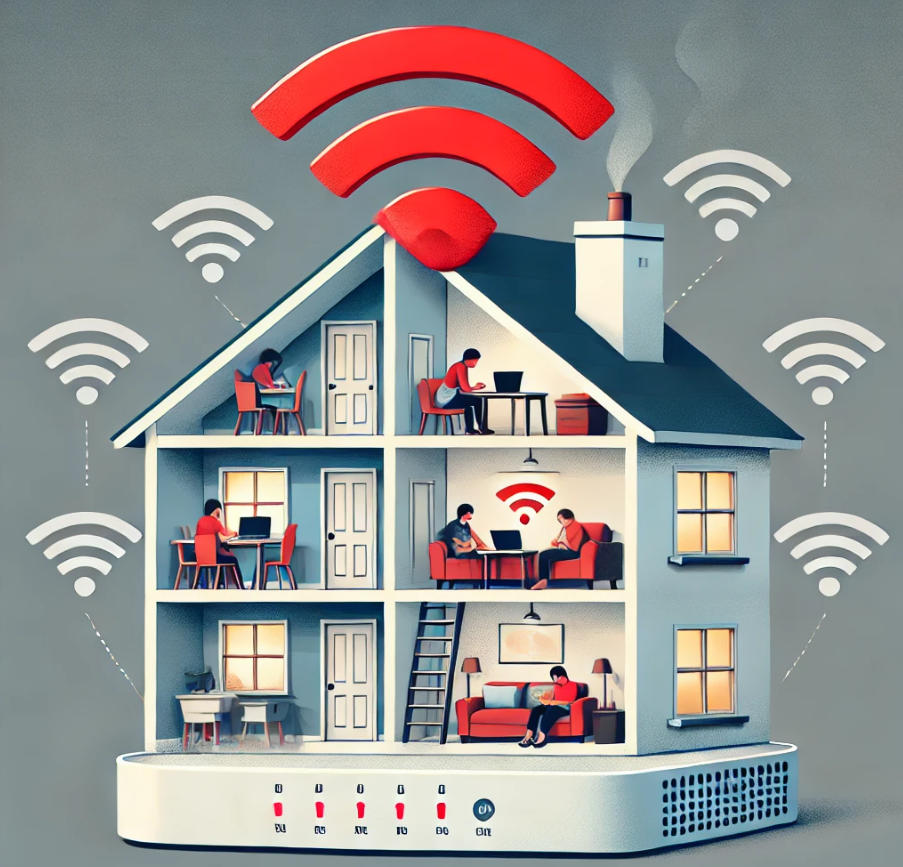We’ve all been there. You’re trying to stream a movie in the living room, video call from your home office upstairs, or even just browse the web in bed, only to be met with sluggish loading times, dropped connections, and the dreaded spinning wheel of frustration. Your first instinct might be to call your internet service provider (ISP), convinced they’re not delivering the speeds you’re paying for. But before you spend hours on hold, consider this: the culprit might be sitting right under your nose – your wireless router.
For many homes, the standard setup involves a single wireless router, often provided by the ISP or a standalone unit purchased years ago. The hope is that this one device can magically blanket the entire house with a strong and consistent Wi-Fi signal. Unfortunately, physics and the realities of home construction often have other plans. Walls, floors, appliances, and even furniture can act as significant barriers, weakening the signal as it travels further from the router. This results in dead zones, slow speeds in distant rooms or on different floors, and an overall frustrating online experience.
Think about it like trying to illuminate your entire house with a single light bulb in the center of one room. The rooms closest to the bulb will be bright, but those further away, especially around corners or behind walls, will be dim and shadowy. Your wireless signal behaves in a similar way.
The Limitations of a Single Router:
- Limited Range: Standard Wi-Fi routers have a finite range. The signal strength naturally degrades with distance.
- Obstruction Interference: Walls (especially those with metal or concrete), floors, and large appliances can absorb or interfere with the wireless signal.
- Bandwidth Saturation: As more devices connect to a single router, the available bandwidth gets divided, leading to slower speeds for everyone.
- Inconsistent Coverage: You might experience strong signal in one area and virtually none just a few feet away due to the router’s limitations and environmental factors.
Enter the Mesh Network: A Smarter Approach
If the scenario described above sounds familiar, it might be time to consider a mesh Wi-Fi system. Unlike a traditional single router setup, a mesh network utilizes multiple interconnected devices, often called “nodes” or “pucks,” that work together to create a seamless and expansive wireless network throughout your home.
Think of it as strategically placing multiple light bulbs throughout your house instead of relying on just one. Each node in the mesh system communicates wirelessly with the others, creating multiple pathways for your data to travel. This intelligent system ensures that your devices connect to the strongest and closest node, eliminating dead spots and providing consistent speeds no matter where you are in your home.
Why Mesh Systems are a Game-Changer:
- Extended and Consistent Coverage: Mesh systems are designed to blanket your entire home, including basements, attics, and even some outdoor areas, with a reliable Wi-Fi signal.
- Seamless Roaming: As you move throughout your house, your devices automatically switch between nodes without any interruption to your connection. You can walk from the living room to the kitchen during a video call without it dropping.
- Easy Setup and Management: Most mesh systems come with user-friendly apps that guide you through the setup process and allow you to easily manage your network, see connected devices, and even set up guest networks.
- Scalability: You can typically add more nodes to your mesh system if you need to extend your coverage further, making it a flexible solution for homes of all sizes.
Considering a Mesh System?
If you’re consistently experiencing slow Wi-Fi speeds in certain areas of your home despite having adequate internet service, a mesh Wi-Fi system is definitely worth considering. While the initial investment might be slightly higher than a single router, the improved coverage, consistent speeds, and overall enhanced online experience can be well worth the cost.
There are various mesh systems available on the market, each with its own features, performance, and price point. Factors to consider when choosing a system include the size of your home, the number of devices you typically connect, your budget, and any specific features you might need (like parental controls or advanced security settings).
I personally use the Google Nest WiFi Pro. I purchased the 3 pack and have the main router on my first floor, have one router in the basement and one of the second floor. The 3 pack costs more than a single router, around $400 on Amazon, they work seamlessly together and setup was a breeze with the Google Home app. Each of the three routers includes two 1-gigabit ports, providing wired connectivity options. The Nest Wifi Pro delivers solid and consistent performance across my entire house, free from frustrating glitches and buffering. Another great feature is being able to check your home Internet status on the Google Home app when you are travelling. If simplicity and reliable performance are your priorities, I highly recommend the Google Nest Wifi Pro.
Don’t let a single, outdated router hold back your home’s internet potential. By upgrading to a mesh Wi-Fi system, you can finally enjoy fast, reliable wireless internet throughout your entire home and say goodbye to those frustrating dead zones for good.
Feeling lost in the digital world? Dr. Tom is here to help!
Join Dr. Tom every week in his award winning column, Dr. Tom’s Cyber Bits and Tips, for byte-sized advice on all things cyber and tech. Whether you’re concerned about online safety, curious about the latest cybercrime trends, or simply want to navigate the ever-evolving digital landscape, Dr. Tom has you covered.
From practical cybersecurity tips to insightful breakdowns of current threats, Dr. Tom’s column empowers you to stay informed and protect yourself online. So, dive in and get savvy with the web – with Dr. Tom as your guide!











